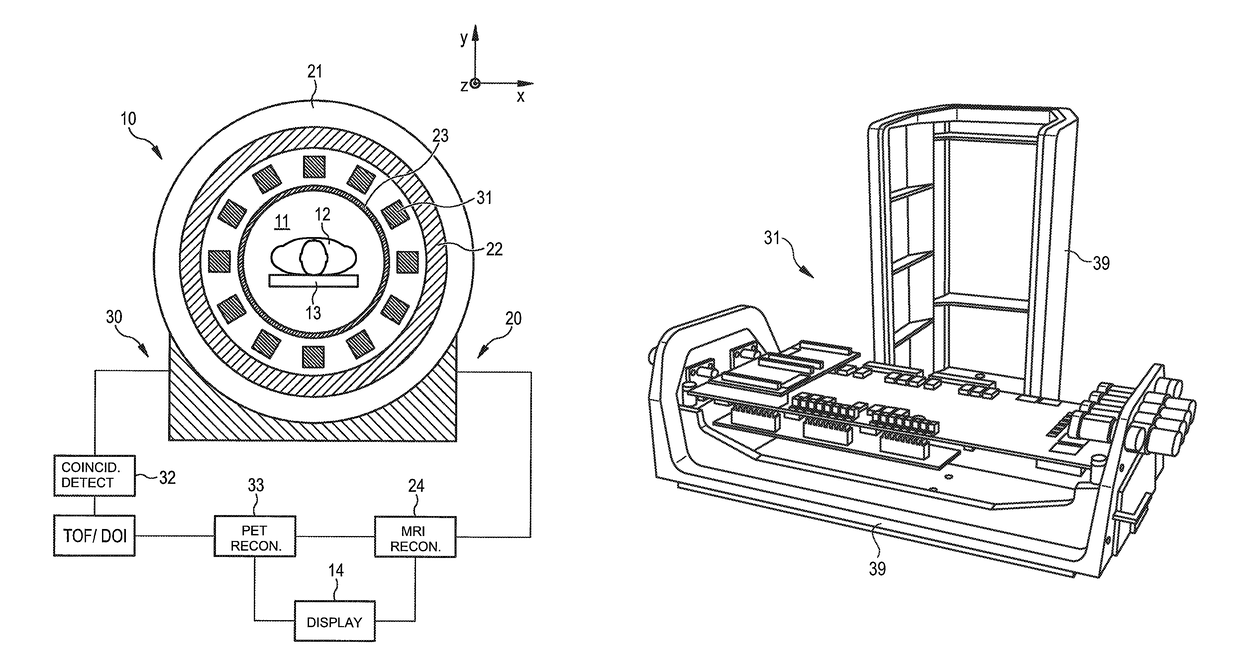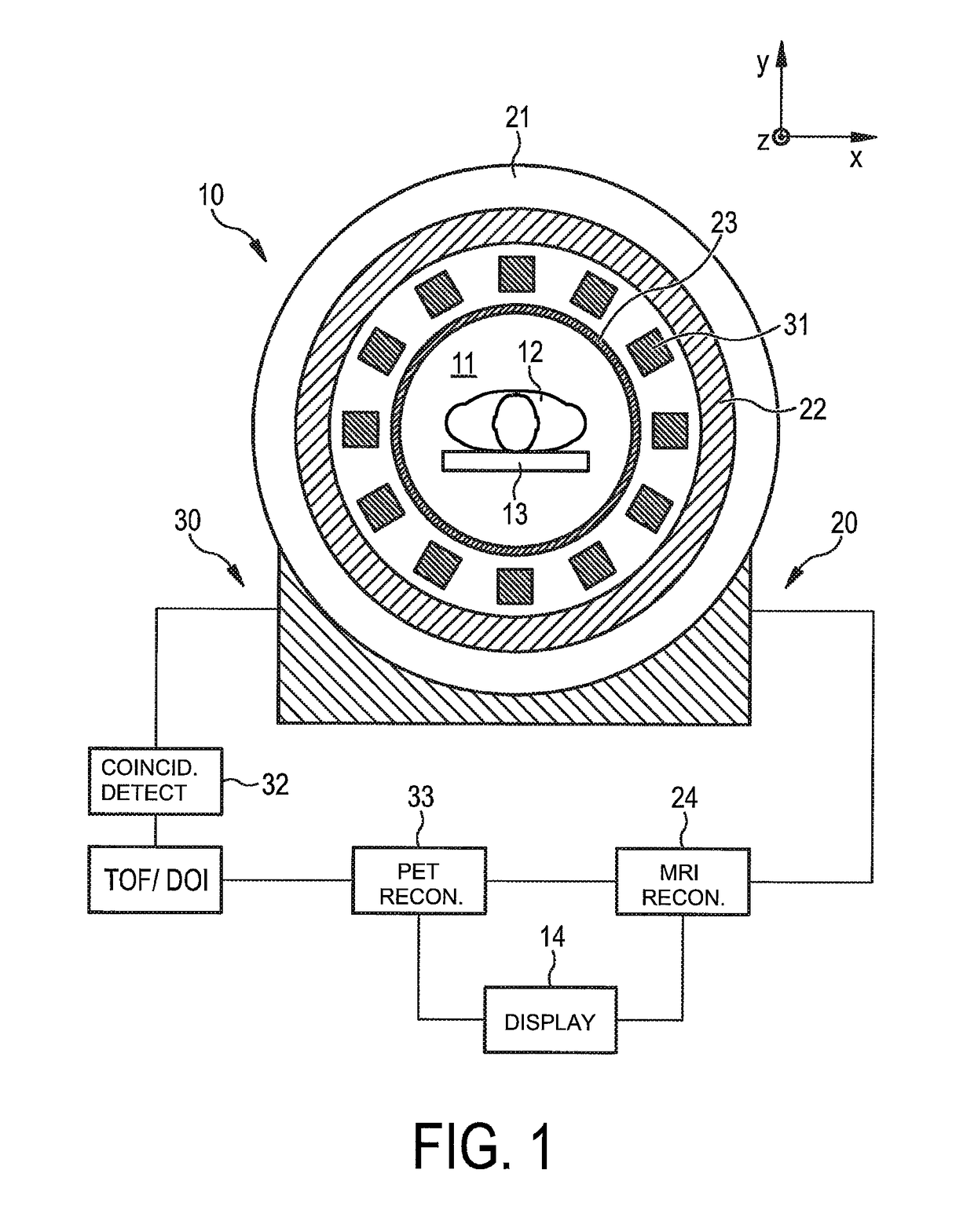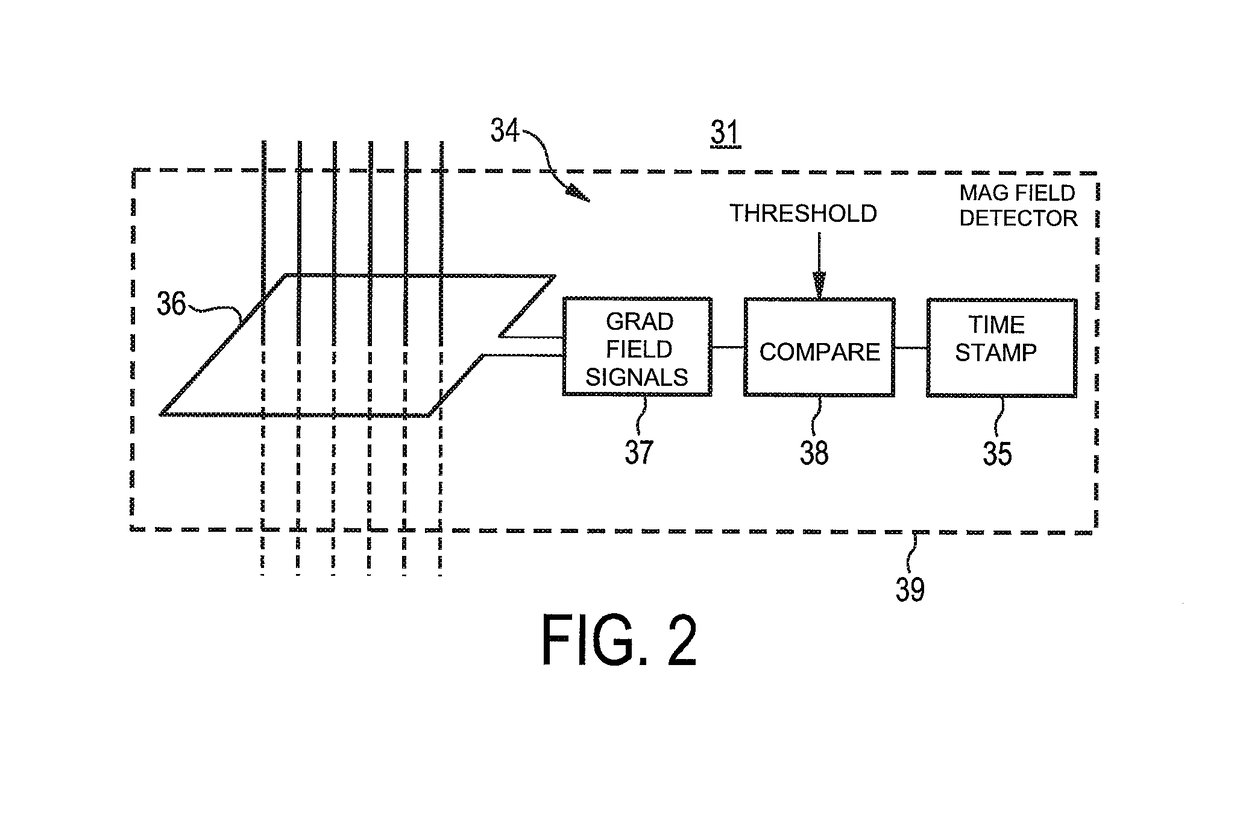Data detection timestamp device for use in combination with an MRI apparatus and a nuclear imaging (PET or SPECT) device
a data detection and nuclear imaging technology, applied in the field of data detection devices, can solve the problems of reducing soft tissue contrast compared to magnetic resonance imaging, notable irradiation (x-ray) dose, and ct in combination with pet has its limitations
- Summary
- Abstract
- Description
- Claims
- Application Information
AI Technical Summary
Benefits of technology
Problems solved by technology
Method used
Image
Examples
Embodiment Construction
[0037]FIG. 1 shows schematically and exemplarily an embodiment of an imaging apparatus 10 comprising a magnetic resonance imaging (MRI) apparatus 20 and a positron emission tomography (PET) apparatus 30. The imaging apparatus 10 is capable of acquiring both MRI data and PET data, for example, from spatial areas of an imaging region 11 that are at least partially overlapping or spatially adjacent.
[0038]The MRI apparatus 20 comprises a main magnet 21 that serves to generate a strong, uniform, static magnetic field B0 through the imaging region 11 (along the z direction, by convention). The main magnet 21 may be an annular magnet or a bore-type magnet. Moreover, the main magnet 21 may be superconducting or resistive in nature; in the former case, it is typically disposed in a cryogenic devar or other cooling system (not shown). The MRI apparatus 20 also comprises magnetic field gradient coils 22 that serve to superimpose switched magnetic field gradients in the x, y, and z directions o...
PUM
 Login to View More
Login to View More Abstract
Description
Claims
Application Information
 Login to View More
Login to View More - R&D
- Intellectual Property
- Life Sciences
- Materials
- Tech Scout
- Unparalleled Data Quality
- Higher Quality Content
- 60% Fewer Hallucinations
Browse by: Latest US Patents, China's latest patents, Technical Efficacy Thesaurus, Application Domain, Technology Topic, Popular Technical Reports.
© 2025 PatSnap. All rights reserved.Legal|Privacy policy|Modern Slavery Act Transparency Statement|Sitemap|About US| Contact US: help@patsnap.com



